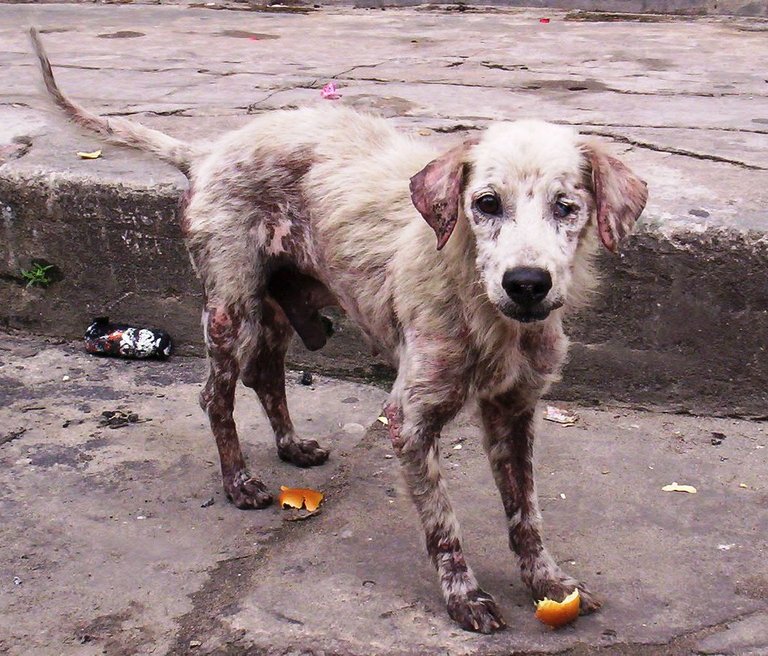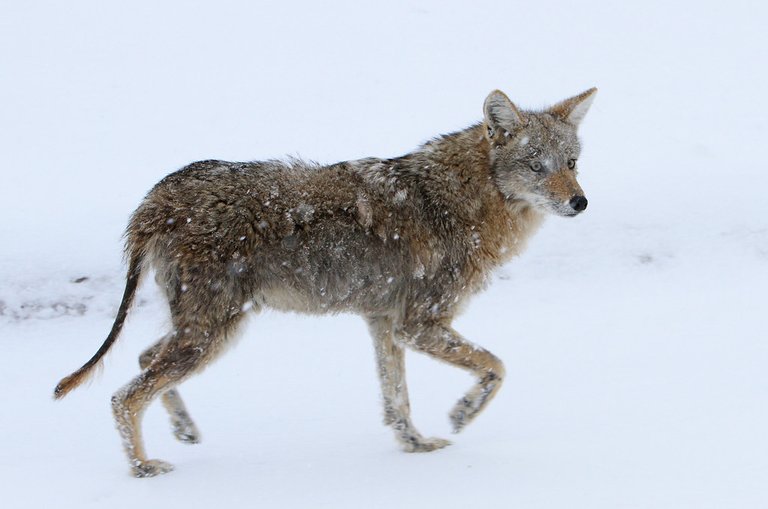A Closer Look at Mange and Scabies: Parasitic Infestations Across Species
Interestingly, I found out there is a type of condition that can affect animals and has its look-alike in humans too, but the causative species are different, and some other interesting things to know about it.
Mange happens to be a contagious skin disease, which is characterized by pruritic dermatitis, crusty, and loss of hair/feathers. This skin disease is caused by different types of parasitic mites that burrow or live on the skin.

flickr.com
Several mite species cause mange, literally speaking of hundreds of species of domestic and wild birds and mammals. On an approximate level, 60 mite families have members that reside in or on the skin, hair, or feathers.
Mange mites are often very small in size, and slow-moving and they live permanently on their hosts. Mange mites have a brief life cycle which is about 1-5 weeks and it is in four stages; egg stage, six-legged larva, eight-legged nymph, and eight-legged adult.
Our focus in this writeup is Mange, an animal skin disease that is caused by mite infestations, it is characterized by itching, thickening of the skin, hair loss, and inflammation.

flickr.com
Certain forms of mange are known in all domestic animals, although several varieties of mange mites infest just one species. They are transmitted by direct contact between animals and by objects that have previously been infested by affected animals.
A case of mange in animals is regarded as scabies in humans. Scabies is caused by a type of mite while mange is caused by another. It is almost impossible for the mites that transfer mange to animals to have the same effect on humans.
The clinical signs of mange vary significantly by type, but the most common indication would be most likely hair loss.
Sarcoptic Mange has signs in the form of hair thinning, hair loss, and the thickening and wrinkling of the skin. Foul-smelling crusts and scabs come as a result of secondary infections with yeast and bacteria.
The head is usually the most affected spot with this type of mange, in most cases the lesions can cover the trunk and limbs. Advanced situations would lead to serious hair loss and systematic bacterial infection with cases of depression, emaciation, hypothermia, and even possibly death. Skin changes that affect the face may lead to impaired hearing, blindness, and difficulty eating.
Notoedric Mange leads to hair loss in an affected squirrel, and it could be a fatal case there where the chest and shoulders are affected first before the spread gets to other parts of the body. During winter, the case is usually more serious, where the insulating layer of fur would expose them to cold.
Demodectic Mange has signs that include dry, flakey, and thickened skin and of course, hair loss. The disease is more severe when has animal is stressed, has poor nutrition, or has a weak immune system.
Transmission is only possible when a host becomes infected through direct contact with an affected animal or comes into contact with a contaminated environment where those free-living mites survive for several weeks in low temperatures and high humidity.
Experts can identify mites through skin scrapings of an affected animal under a microscope. It is possible to determine what type of mite is in the question with a difference in appearance when viewed under a microscope.
Sometimes, when an animal is healthy, the issue of mange infection would resolve itself, but otherwise, treatments would be administered for effective relief of the animal.
Human mange which we know as scabies is a different thing on its own, it appears as a skin rash and may begin with the fingers and toes first. Afterward, it may spread to the armpits, genitals, and other areas of the body.

commons.wikimedia.org
Humans may first notice scabies as itching or lines on the skin beginning with a dot, this is most likely because mites have laid eggs on the skin of an affected person. Afterwards, the rash will spread and more little bumps or blisters will appear on the skin.

flickr.com
Not all types of mites cause mange, but once humans come in contact with the type of mite that causes mange, they may get onto the skin and produce a temporary allergic reaction that does not require further treatment.
Humans are at risk of getting mange if;
- You practice poor hygiene.
- Live in crowded areas
- Have a compromised immune system.
- Little children or old adults
- Work or live in a nursing home or hospital.
- Attend child care frequently.
After treating the person with visible symptoms of scabies, doctors may recommend treating other members of the family even when they are not showing any symptoms yet.
Minges in animals and scabies in humans are highly contagious, although the minges that affect your pet cannot affect you as the pet owner, there are different species of mites. However, care needs to be taken once a member of the family is affected, proper hygiene, and isolation, amongst other precautionary methods as advised by the doctor and veterinary respectively.
References
woah.org/fileadmin/Home/fr/Health_standards.pdf
Wow friend, the differences between mange in animals and scabies in humans are fascinating. Mite species vary, but symptoms are similar. This is really good info I'm realizing
Thank you @theringmaster, yeah very interesting information.
You're welcome dear friend
Thanks for your contribution to the STEMsocial community. Feel free to join us on discord to get to know the rest of us!
Please consider delegating to the @stemsocial account (85% of the curation rewards are returned).
Thanks for including @stemsocial as a beneficiary, which gives you stronger support.